All About Japanese Booze
Believe it or not, drinking is a pretty important part of Japanese culture. Whether it's sake made from a generations-old brewery, an award-winning whisky increasingly hard to buy, or a quick pick me up from a convenience store, Japan is home to a liquid smorgasbord of local alcoholic delights. If you're looking to dive in, we're here to help!
By DavidA (Very) Short History of Japanese Alcohol
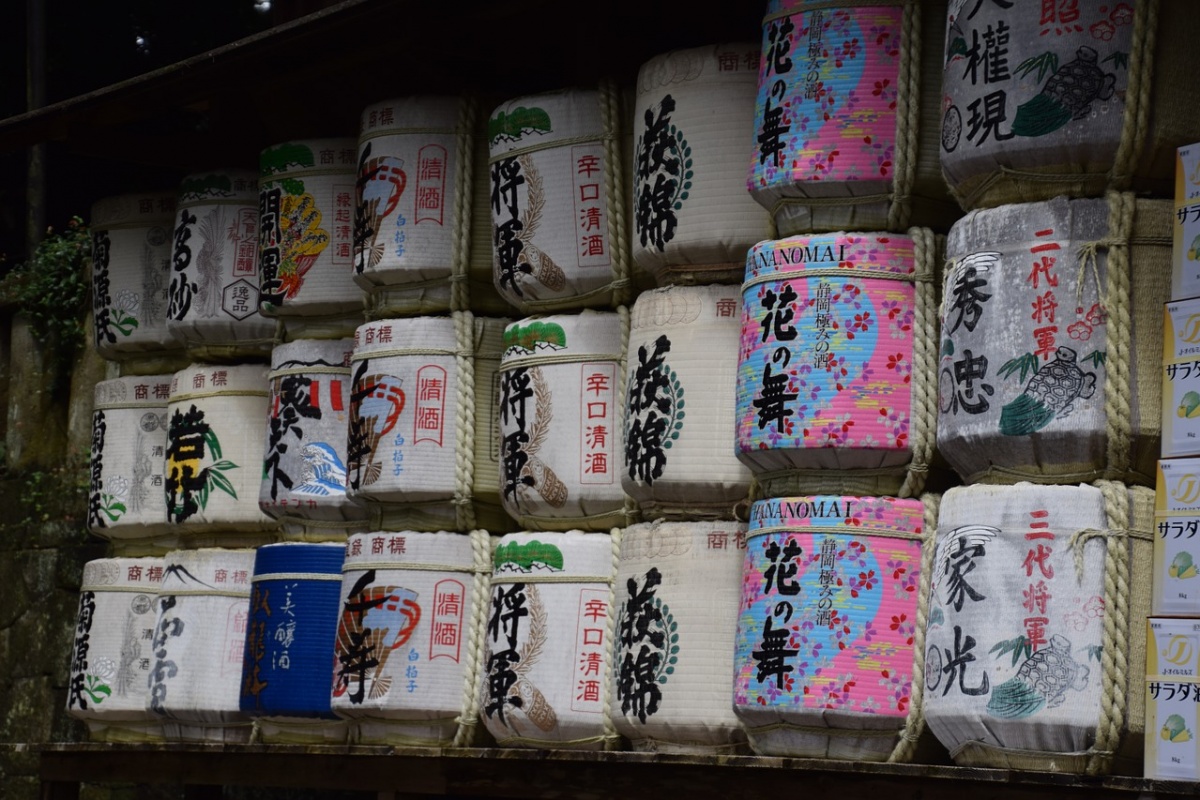
Japanese food culture has gained well-earned global repute (Tokyo has the most Michelin stars of any city in the world) and the nation's own alcohol beverages—collectively referred to as sake (酒)—have garnered more and more international attention recently. Traditional nihonshu (日本酒) and shochu (焼酎) have been joined on the roster by local whiskies, Japanese beer from big breweries and craft microbreweries, popular spirit and soda mixers that are exclusive to Japan, seasonal fruit liqueurs and even a recent rise in the popularity of distilled gin!
The Japanese, like most human beings, have been drinking alcohol, in some form, since time immemorial. Nihonshu (a word that literally means "Japanese alcohol," and is used by the Japanese to refer to the rice liquor that the western world calls "sake") was a focal point of ceremonies, events, celebrations and aristocratic mealtimes in ancient Japan. While it's hard to pinpoint exactly when production of sake began in Japan, it has a history of over 1,000 years, and is basically produced in every corner of the country!
Modern Japan has a reputation for being pretty buttoned up, and rather strict when it comes to social interactions and other aspects of everyday life, but is really open when it comes to its drinking culture. It's arguably one of the nation's favorite pastimes; pubs, bars, restaurants and izakaya are often packed out Monday through Sunday, throughout the year (especially in the major cities). Let's take a deeper dive into what's on offer to see what all the fuss is about.
Sake・Nihonshu
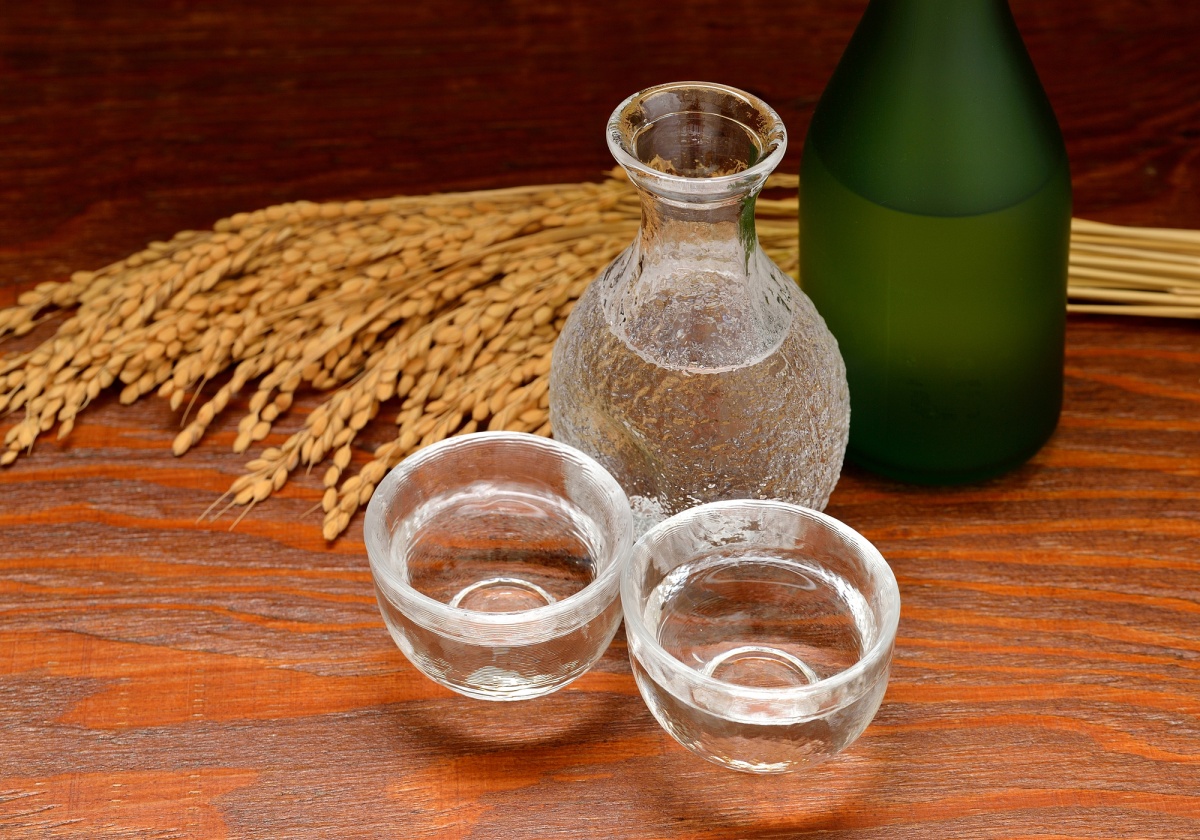
https://pixta.jp/
First, a quick note: something that can cause a little confusion from time to time is the sake misnomer. Sake literally means "alcohol" in Japanese, and therefore can be used for any alcoholic drink. Nihonshu however, is the Japanese term for rice wine which most visitors to the country think of as "sake."
So with that out of the way, what exactly is nihonshu? There are three main ingredients in sake: rice, water and a unique type of mold called koji (aspergillus oryzae) used in fermentation. Each plays an important part in determining the resulting flavor profile; the quality of the water, the strain of koji and the type of rice, combined with the techniques and environment utilized during the brewing process, all combine to create the finished product. Speaking of rice, it's worth noting that the rice used in sake production is quite different from table rice—in fact, it's basically inedible! The rice grain is much thicker (which is quite important, and will be explained a bit more later), and with a nice starchy core essential for fermentation.
Over the years Japanese rice wine has become a wonderful expression of the craftsmanship. Breweries have spread across the nation from top to bottom, and every prefecture has their own signature flavors and recognized brands—Niigata, Hyogo and Kyoto are three of the most prolific nihonshu brewing prefectures (about 30% of all nihonshu produced in Japan comes from Hyogo), along with Akita, Fukushima and Hiroshima. Many of said breweries have been run by the same family for several generations (sometimes even longer), slowly and iteratively perfecting their craft. Today we are all the beneficiaries of this; the extensive selection of sake across Japan is as delicious, affordable and bountiful as it ever has been.
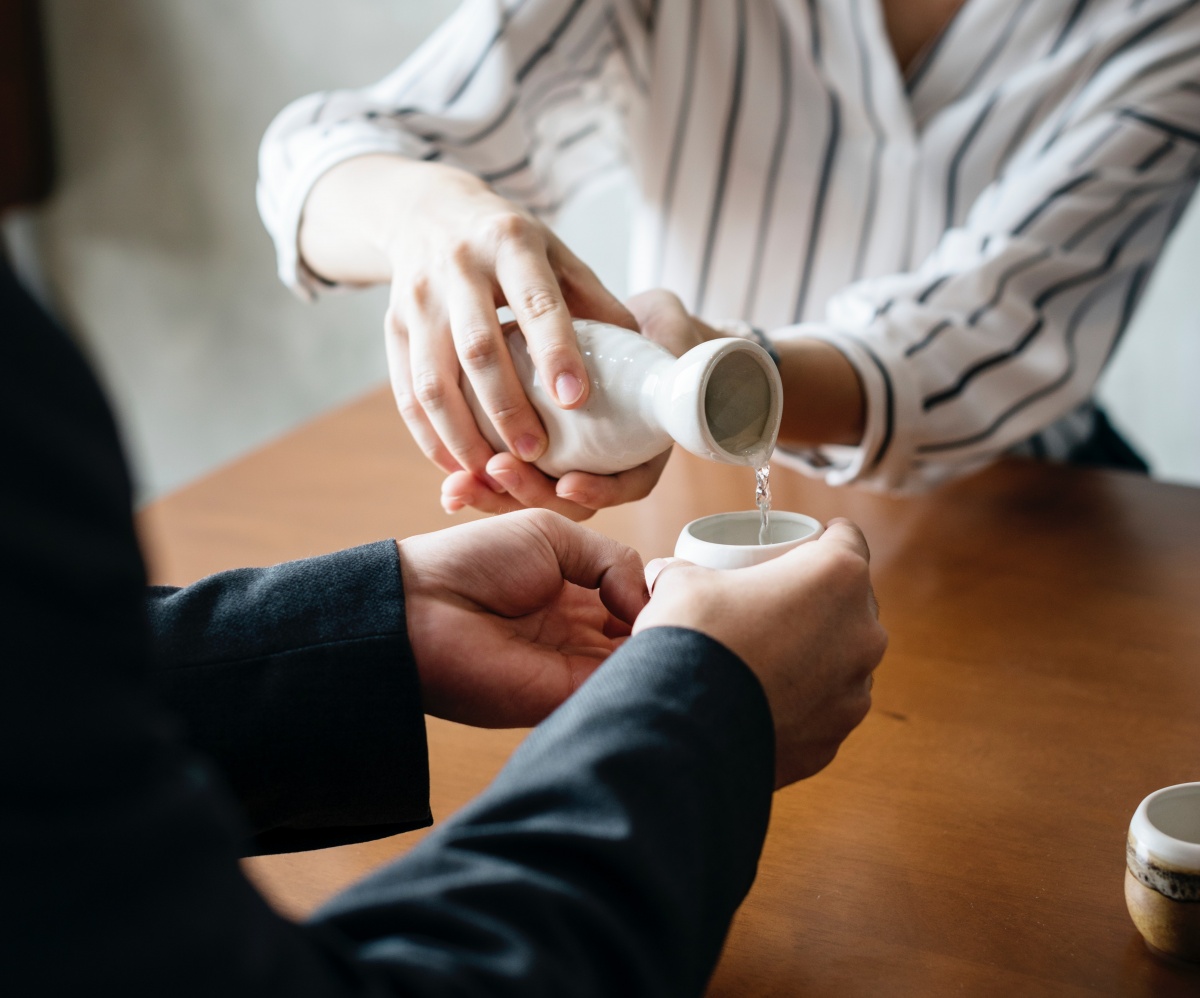
Nihonshu actually has one of the highest naturally occurring alcohol by volume (since many other spirits use brewers alcohol to bump up the ABV), usually between 15-20 percent. Like wine, nihonshu has an incredible array of flavor profiles and tasting notes which are directly affected by the types of ingredients used in the brewing process, as well as the particular brewing techniques. Remember how we mentioned rice? During production the outer layer of each grain is polished away, and one of the most common ways to categorize nihonshu is based on what percentage of the grain has been milled! With all that in mind, let's go over some vocabulary relating to the different types of nihonshu you're likely to come across, shall we?
・Futsu (普通) : a word that literally means "ordinary," futsu-shu is any nihonshu that has no special designation, and is made with rice that has had 30 percent of its grain polished away.
・Junmai (純米) : junmai-shu is made only with rice and koji (meaning no brewer's alcohol is added).
・Honjozo (本醸造) : honjozo-shu has brewer's alcohol added during the fermentation process.
・Ginjo (吟醸) : ginjo-shu is made with rice which has had 40 percent of its grain polished away.
・Daiginjo (大吟醸) : daiginjo-shu is made with rice which has had 50 percent of its grain polished away.
・Namazake (生酒): namazake is sake that is not pasteurized, and more than other varieties, namazake must be refrigerated or the flavor and aroma are subject to change.
・Nigorizake (濁り酒): quite popular in the west, nigorizake is unfiltered sake that is typically cloudy, may contain koji rice, and is generally much sweeter than other varietals.
・Shinshu (新酒): shinshu is nihonshu that is brewed and shipped for consumption in the same year.
Traditionally nihonshu is served cold, but in the frigid Japanese winters, many establishments will also offer to serve it hot or warm—this is called atsukan (熱燗) and nurukan (ぬる燗), respectively, and the heating process also has the added benefit of opening up the aromatics (which can make some more astringent varieties much more drinkable). Servings usually come in ceramic, metal or glass decanters called tokkuri (徳利) with small drinking cups (ochoko・おちょこ) for each person. Alternatively in some restaurants, the may pour your nihonshu into a glass that will overflow into a wooden drinking box called a masu (枡). Both are awesomely traditional ways of enjoying Japan's most traditional drink! There are also somewhat ritualized steps to enjoying nihonshu in a group (such as who pours for whom, the correct way to hold the bottle and your glass, as well as other minute details), but that's a bit beyond the purview of this piece.
Keep in mind that the above list is by no means exhaustive, merely a good place to start expanding your nihonshu vocabulary (and palette)! To the uninitiated, junmai daiginjo may be lauded as "the best" varietal, but like wine or beer, it's best to think about what flavor profiles appeal to each individual drinker, rather than try to measure each type by simple purity.
You would be hard pressed to find an establishment with an alcohol licence in Japan that doesn't serve at least one kind of nihonshu; you will be literally spoiled for choice across the country.
In Tokyo there are some excellent tasting shops, which are a great way to sample several kinds of nihonshu in one sitting, while hopefully getting better acquainted with the intricacies of the drink—of which there are no shortages. The Meishu Center in Hamamtsucho (near Roppongi) is super popular with tourists and salarymen alike, whereas Imadeya Ginza, located in the Ginza Six boutique department store, is a slightly more upmarket tasting shop, specializing in all Japanese liquor. If you want to do a bit more than tasting, Kurand Sake Market has several locations in the greater Tokyo area, and offers nightlong reservations during which patrons can enjoy over 100 different bottles of nihonshu from all over the country!
Shochu
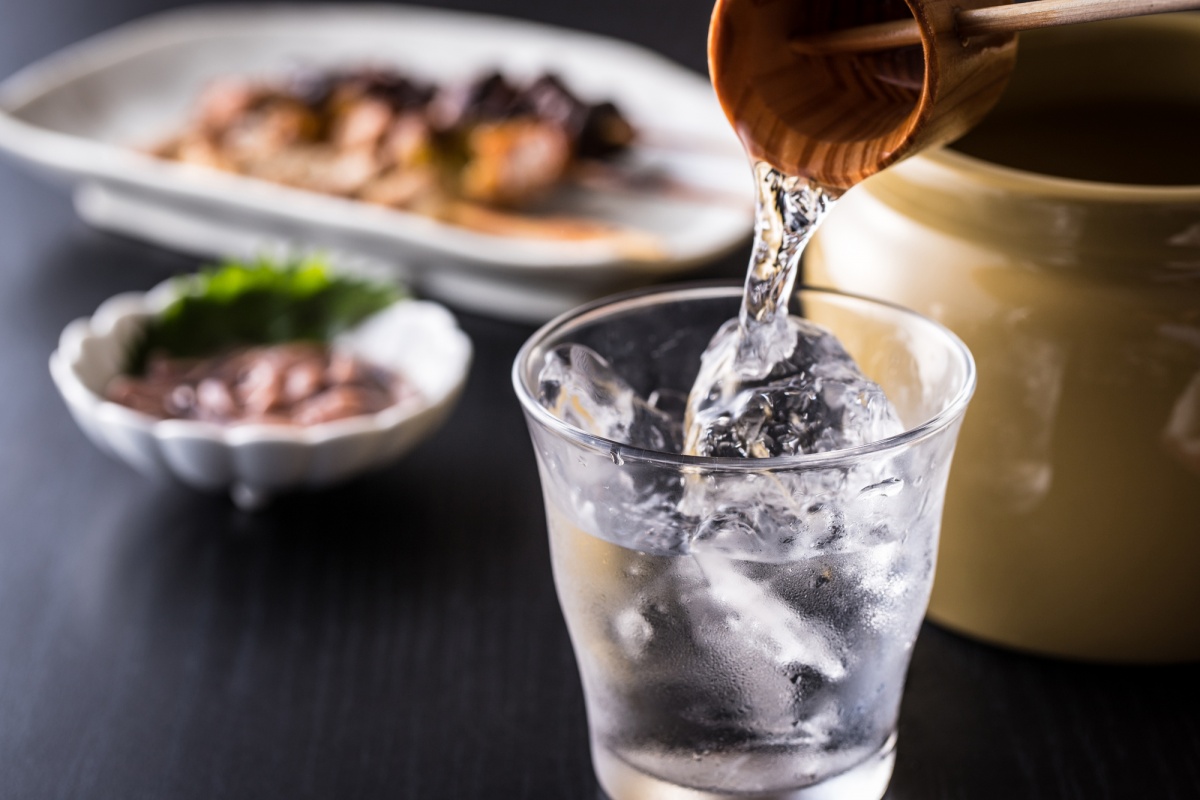
https://pixta.jp/
Until recently, shochu (焼酎) was barely known beyond the shores of Japan, but it's becoming increasingly popular both domestically and internationally, and sometimes goes by the nickname "the vodka of Japan." While that's a bit of a misnomer (you'll understand why as you read on), shochu is a distilled liquor—either singly distilled, or distilled multiple times— that usually clocks in between 20 and 35 percent alcohol by volume. The main ingredient can be one of several different types of starch—rice, barley, sweet potato, brown sugar, buckwheat and more. Depending on the starch used in the distillation process, the flavor profile varies greatly, which is why shochu is usually categorized by its main ingredient. You'll likely see it divided into these categories:
・Kome (米): rice shochu
・Mugi (麦): barley shochu
・Imo (芋): sweet potato shochu
・Kokuto (黒糖): brown sugar shochu
In addition to starches, shochu can also be made out of a variety of Japan's homegrown citrus fruits, like sudachi (kind of like a slightly bitter Japanese lime) or yuzu (a highly aromatic, slightly sweet citrus reminiscent of lemon). Certain regions of Japan are lauded for specific types of shochu; Kagoshima, for example, is known nationally for its sweet potato shochu, Tokushima is one of the leading producers of sudachi shochu, and Okinawa has its own regional rice shochu, Awamori. Needless to say, the diversity of flavors, aromas and potency is quite staggering, especially for a single spirit, and for the uninitiated, shochu can certainly pack a punch!
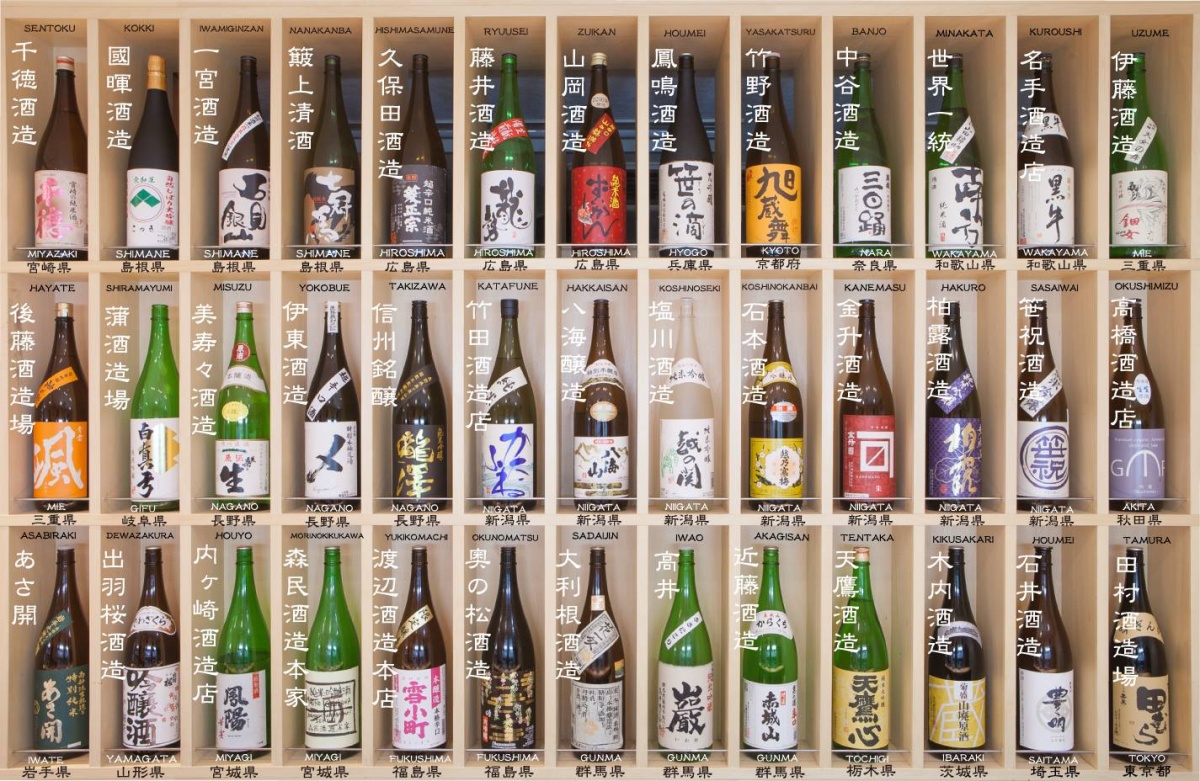
There are several ways to enjoy shochu. The most common are straight and on the rocks (both self-explanatory), as well as oyuwari (お湯割り), which is shochu with hot water. Like whisky and other spirits, the addition of hot water is not only a comforting way to imbibe when the weather is chilly, but also a great way to enhance shochu's more subtle notes. Like nihonshu, most drinking establishments will be stocked with a variety of some of the country's most popular brands of shochu, and you can order it however you prefer to drink it.
There are also special kinds of shochu, some of which are a little less common, but no less satisfying to the taste buds.
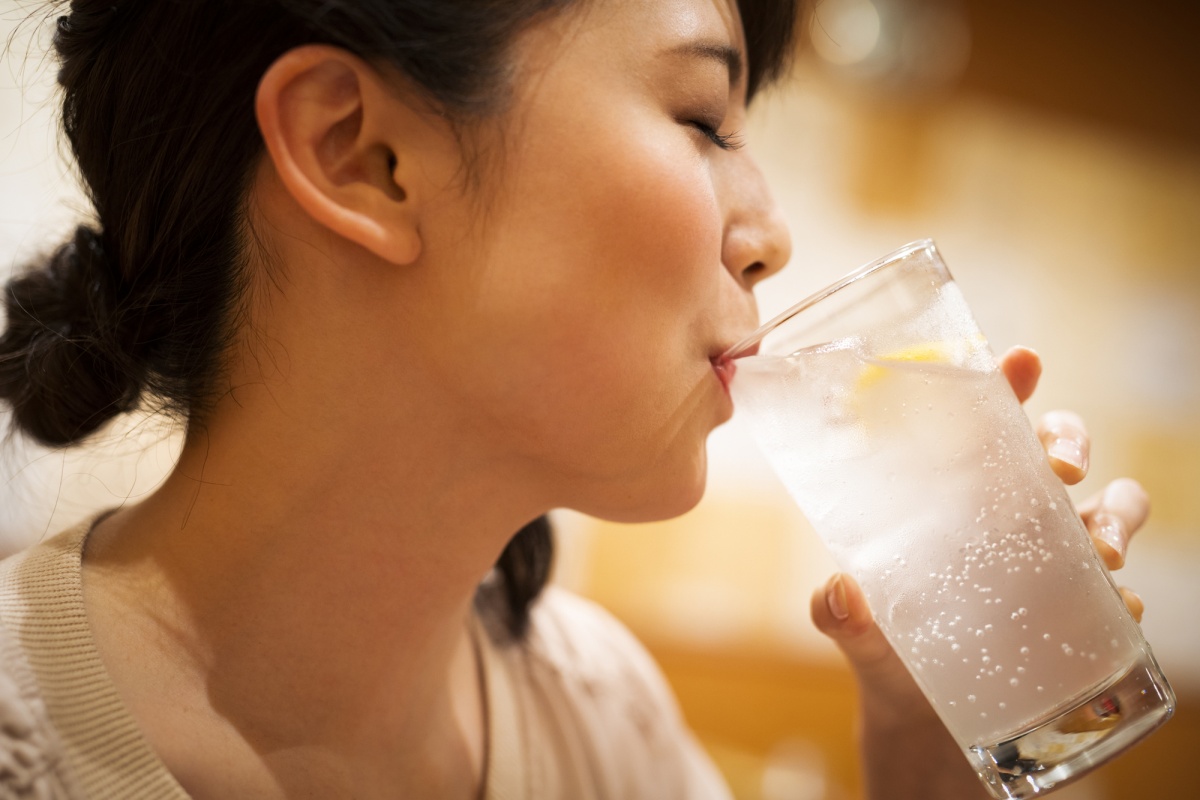
https://pixta.jp/
For example, habushu ("snakebite liquor") is awamori mixed with a variety of herbs, honey and the venom of a pit viper snake. Barrel-aged shochu (as well as shochu made from less conventional ingredients like mountain yams) is also starting to become more popular—it's often recognizable due to it's golden brown tinge. If it's a bit too much for your palette, basically every izakaya or restaurant will offer sours, which are relatively cheap shochu and soda cocktails made with different varieties of fresh fruits, teas and a plethora of other unique mixers (like the Japanese soda Ramune). If you head into a haunt favored by grizzled salarymen, you might find a "half and half" on the menu, which is shochu mixed with the beer-flavored, almost non-alcoholic drink, Hoppy (more on beverages like that in a moment).
Though shochu's popularity among non-Japanese imbibers is still relatively small, it is growing slowly but surely. If you're interested in learning more about this unique beverage, check out The Shochu Handbook by Christopher Pellegrini! And, of course, try as many types as you can!
Beer
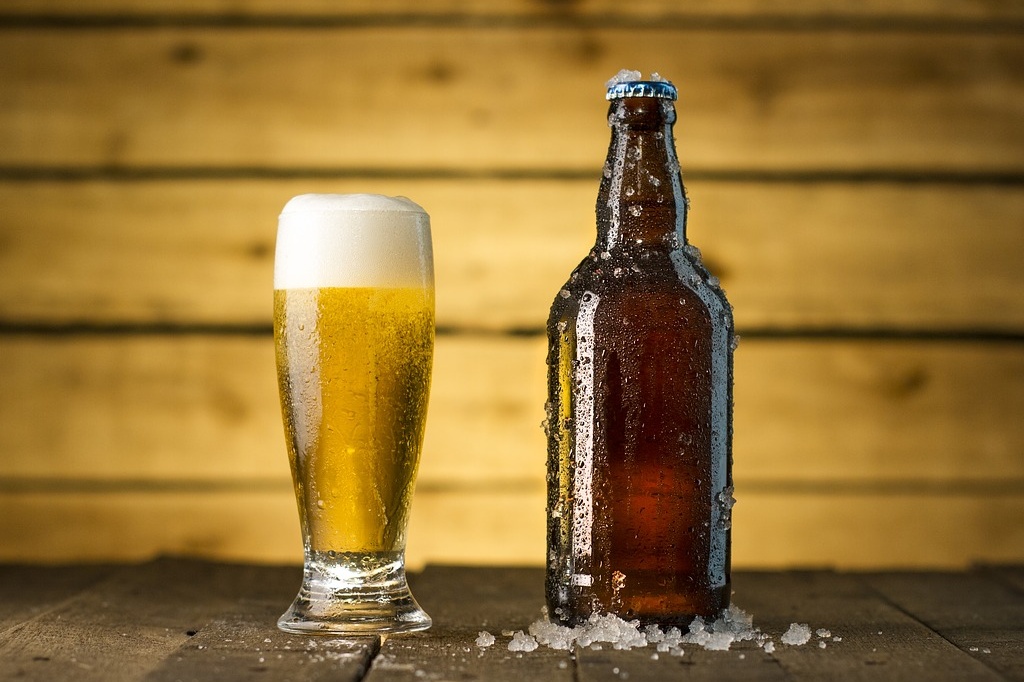
As previously mentioned, beer is (without a doubt) the most popular drink in Japan. This should come as no surprise really, given the quality of the local brands—Sapporo, Asahi, Kirin, Yebisu and more.
Beer was first introduced to Japan in the Edo Period (1603-1867) by Dutch merchants who would dock at Dejima, a trading port in Nagasaki. It wasn't until the late 1800s, however, that Japan tried its own hand at beer. According to the Brewers Association of Japan, the first beer was actually test-brewed by a Japanese doctor of Dutch medicine, who was following a description he found in a Dutch book. The first proper brewery to open in Japan was the Spring Valley Brewery in Yokohama in 1870, and was actually opened by an American. The first Japanese-owned brewery was opened in Osaka in 1872, and was followed by the Hokkaido Kaitakushi Beer Brewery in 1876—which went on to become the beloved brand Sapporo.
In 1901 the government introduced the Beer Tax Law, which required breweries meet certain production volume requirements in order to obtain a brewing license. That production volume was eventually raised to 1,800 kiloliters, which had a couple of different effects—companies that were already relatively successful, like Asahi and Kirin, were able to increase their production, while would-be small-scale enterprises that couldn't meet the minimum production volume disappeared. Eventually the tax system also required that for a drink to be categorized as beer, it had to be made with at least 67 percent malt. This led to the creation of happoshu (発泡酒), a cheaper, beer-like malt beverage that doesn't meet the 67 percent malt requirement (and partially explains where the aforementioned Hoppy came from).
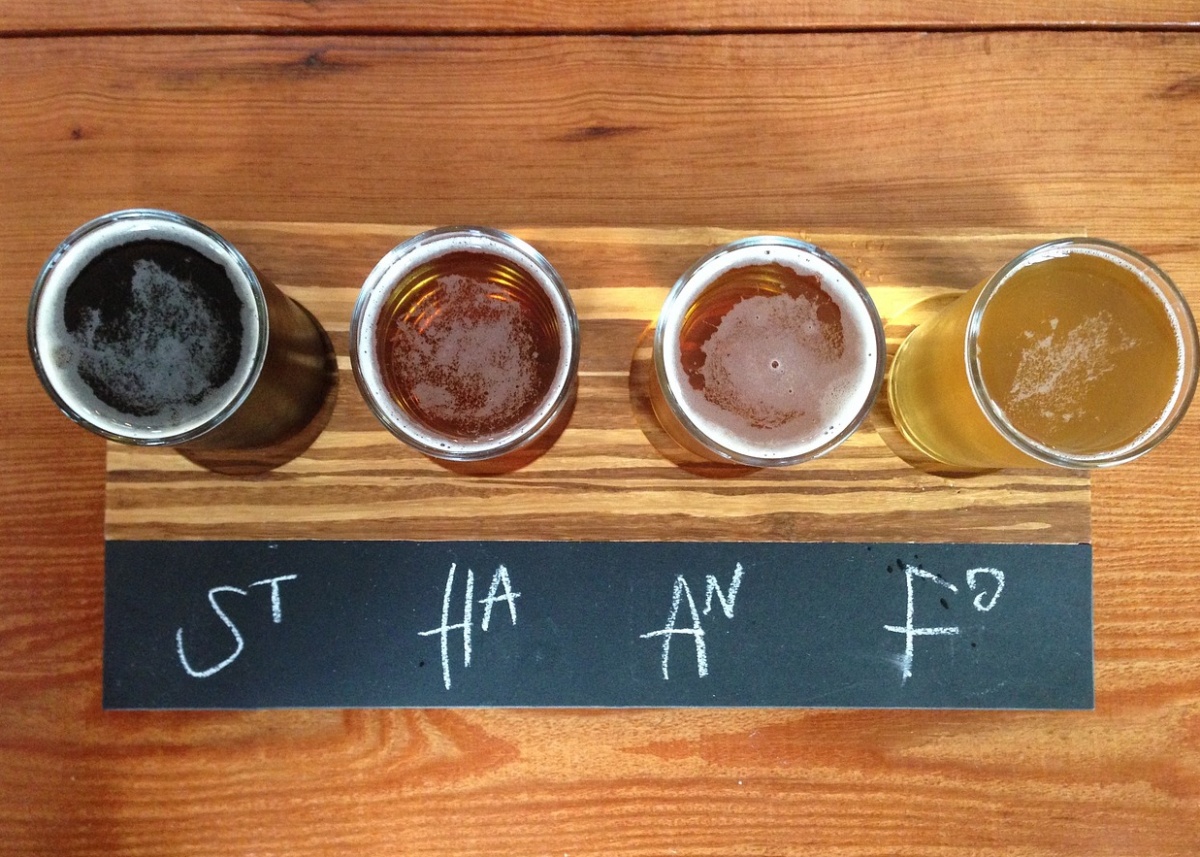
While the industry had various ups and downs throughout the tumultuous Showa Period (1926-1989), in 1994 the stringent production volume laws were loosened, allowing brewers to produce a minimum of 60 kiloliters (a far cry from the previous 1,800 or more). While it's definitely better late than never, the laws surrounding the industry are part of why craft beer and microbrews were such a rarity in Japan for so long.
These days, no matter the size of the brew, Japanese beer is celebrated for its quality across the board, and many of the bigger brands are ubiquitous around the globe. It might be easier to tell you where you can't find them; between breweries and beer museums that offer incredible tours with complimentary drinks, convenience and groceries stores where there's so many they're practically falling off the shelf, or restaurants that are basically guaranteed to have one or two nama (draft) beers on tap. There are plenty ad hoc brewpubs too, which have several classic Japanese beers on tap—though newer versions of these pubs are leaning more toward to the world of craft beer.
Some of the best known Japanese craft brewers in Japan include: Far Yeast, Baird Beer, TY Harbor and Hitachino Nest Beer (a family-run company who have been brewing alcohol for eight generations). In Tokyo, craft beer taprooms are appearing everywhere, showcasing classic infusions along with interesting new creations that combine western flavors with more delicate Japanese ingredients. The majority of taprooms will offer mini beer flight options, allowing you to sample their selection of their alcoholic concoctions; a kind of liquid tapas, if you will. Check the links above to see where the aforementioned brewers can be found!
Wine
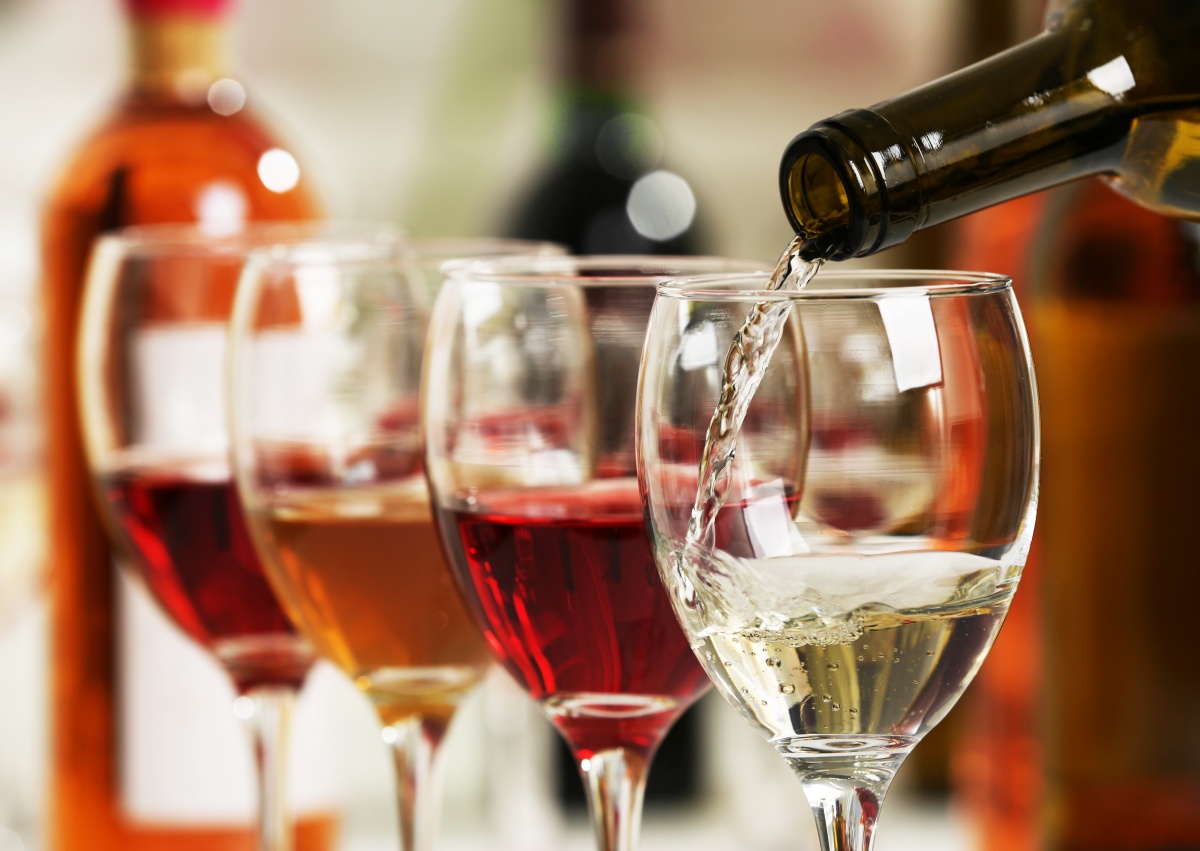
https://www.shutterstock.com/
That's right, wine! Sure, Japan might not be the first place that comes to mind when you think of wine (heck, it might not come to mind at all!), but the country has a long history of grape growing. Two of Japan's native grape varietals—Koshu and Muscat Bailey A—are actually recognized by the International Organisation of Vine and Wine. Like other types of alcohol that Japan didn't produce on their own, winemaking is the direct result of western influence. Traders would bring it into the country, and the famous Iwakura Mission brought back information on European wine culture, so the craft is relatively young. In fact, it it is said that the first real attempt in Japan was in Kofu, in Yamanashi Prefecture, in the 1870s by two young men—Hironori Yamada and Norihisa Takuma—who used sake brewing equipment and food grapes... needless to say, it wasn't the most auspicious of beginnings.

https://www.shutterstock.com/
From those humble beginnings, wineries began to spring up around Japan—both private and state-owned—and winemakers would travel abroad to study the craft in France and other countries. That said, it was still quite some time before wine consumption really gained an audience in Japan. After World War II and the Tokyo Olympics in 1964, the widespread adaptation of western culture created small booms and busts for wine that resulted in slow but incremental growth and awareness of the beverage.
According to the Japan Wineries Association, these days there are some 200 wineries in Japan, though most of them are small or medium-sized operations. Although the majority of wine consumed in Japan is actually imported, a few regions around the country have gained reputations as pioneers in wine production; there's Ikeda and Furano in Hokkaido, Tendo in Yamagata and Joetsu in Niigata, among others. Still, the crown jewel of winemaking is actually still where it all began—Yamanashi Prefecture. Many of the wineries offers tours and tastings, and the scenery alone is worth the trip!
Generally speaking, Japanese wine tends to run a bit on the sweeter side, likely because of the sweetness of domestic grape varietals. Koshu grapes are a pale purple, and produce a somewhat fruity bouquet reminiscent of peach. Because it's such a popular varietal in Japan, wines made from Koshu are said to be a great match for Japanese cuisine. The Muscat Bailey A, on the other hand, is a hybrid grabe that was developed to adapt to the country's climate. They're said to have a sweet flavor similar to grape juice, but have also been blended or aged to create more full-bodied wines that appeal to different palettes, making it a very versatile grape indeed!
While Japan is still new to the game, there's clearly a dedicated and passionate group of artisans working to refine their products, and create that delicate balance between respecting the history of the craft and pushing the envelope while appealing to their audience. The next time you stop into a Japanese restaurant, check out their wine list and see if they have any domestic varietals. You might be pleasantly surprised!
Spirits
While classic spirits aren't necessarily traditional, Japan has more than made up for lost time! Let's take a look at some of the delicious spirits Japan distills domestically.
Whisky
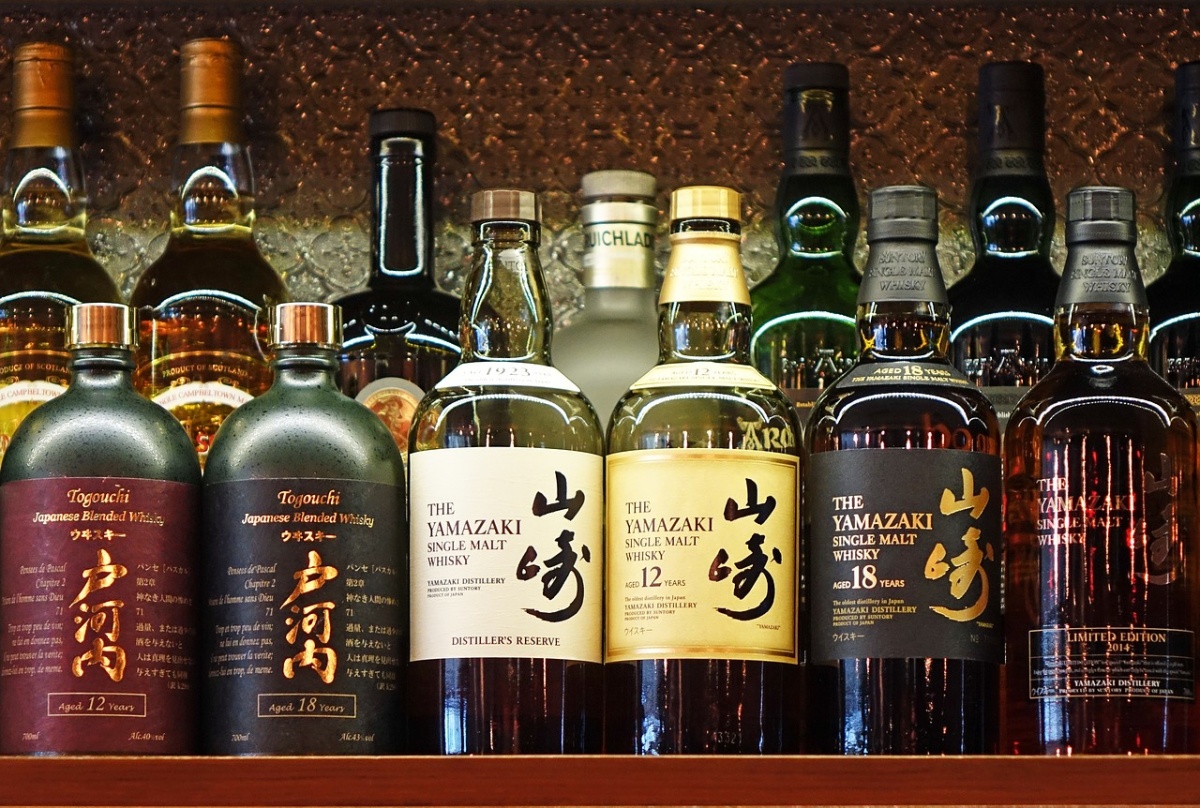
Like beer, whisky started to take root in Japan in the late 1800s, but it didn't become popularized until 1924 when the first distillery—the Suntory distillery in Yamazaki—was opened by the (arguable) fathers of Japanese whisky, Torii Shinjiro and Taketsuru Masataka. Torii was a successful wholesaler (and also the creator of Akadama Port Wine), and Taketsuru had studied distillation in Scotland, which might help to explain why many Japanese whisky tend to be similar to Scotch, rather than other styles.
In less than a century, many major and small batch whisky distillers have joined the ranks alongside Suntory; Nikka, Kirin, White Oak and the incredibly acclaimed Chichibu, to name a few. The price range of Japanese whisky can vary wildly, not just globally, but domestically as well. A fifth of Chita or other mass produced single malt whisky can go for around ¥5,000 to ¥7,000—not bad for a delicious alcoholic souvenir—where small batch or award winning whisky like Ichiro's Malt or Yamazaki can fetch a small fortune (if they can be purchased at all).
Japanese whisky distilleries have been picking up awards left, right and center since the turn of the century, which has invariably led to the spirit's rise on tourist's radars. As such, it is now easier to sample than ever. The classy Ginza area is arguably one of the best places to get your hands on Japanese whisky—Apollo, Rock Fish (who do a fantastic whisky highball; a local favorite) and Hibiya Bar Whisky-S are three such examples. Just beware that Japanese whisky typically has an alcohol content of 40 percent, so it's best to savor each glass, rather than charge through the bottle!
The markup on Japanese whisky (and nihonshu) will likely be considerable in your home country, so if you are a big fan, you can save a lot of money taking a few bottles home with you!
Gin
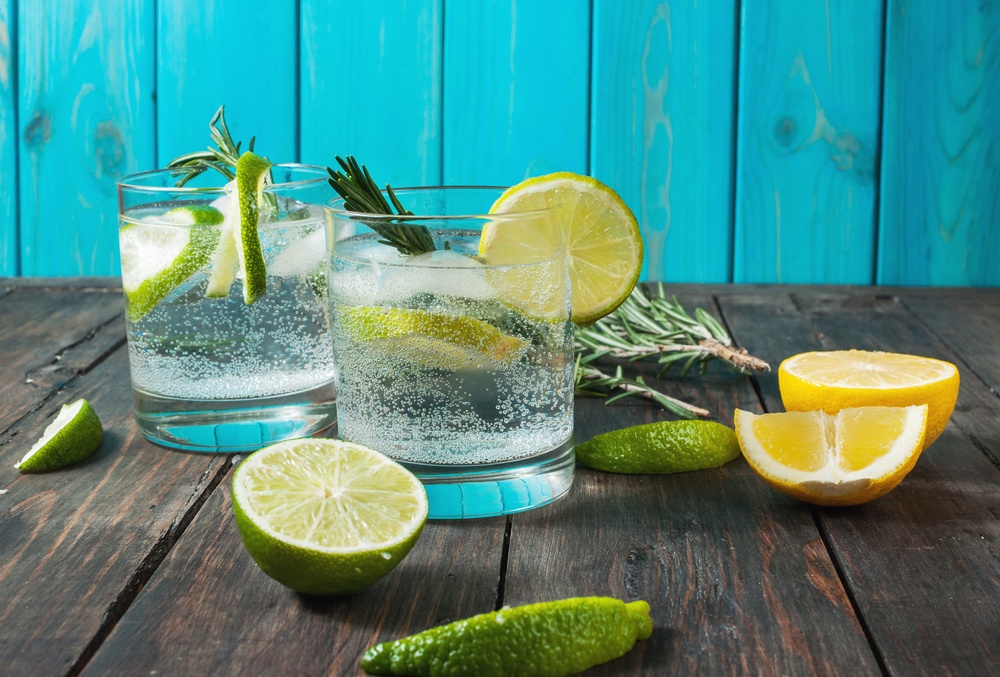
https://www.shutterstock.com/
As one of the world's most popular spirits, it's no surprise that Japan is in on the action as well! Admittedly, Japanese gin production is a rather recent phenomenon—the Kyoto Distillery started making their own craft gin in 2016—but as is common, it didn't take long for them to start putting their own unique twists in terms of ingredients and production methods. Their flagship is KI NO BI, a dry gin created with Japanese botanicals in northern Kyoto such as yuzu, cypress, bamboo, gyokuro tea and Japanese peppercorn. Interestingly, their botanicals are separated and then distilled, before they are blended to create the final product.
Veteran whisky makers Nikka and Suntory jumped onto the scene shortly after in 2017, and have also utilized uniquely Japanese ingredients to create a spirit that is recognizable to fans but quintessentially Japanese. If you're interested in making a craft cocktail unlike any other, you might want to reach for one of these! The aforementioned Imadeya Ginza store in Tokyo has an excellent Japanese craft gin selection, just perfect for the savvy connoisseur or ambitious tourist.
What Else is Available?
With most the main Japanese alcoholic classics ticked off, let's have a quick look at some other varieties of local punch that may just tickle your fancy.
Seasonal Fruit Liqueurs
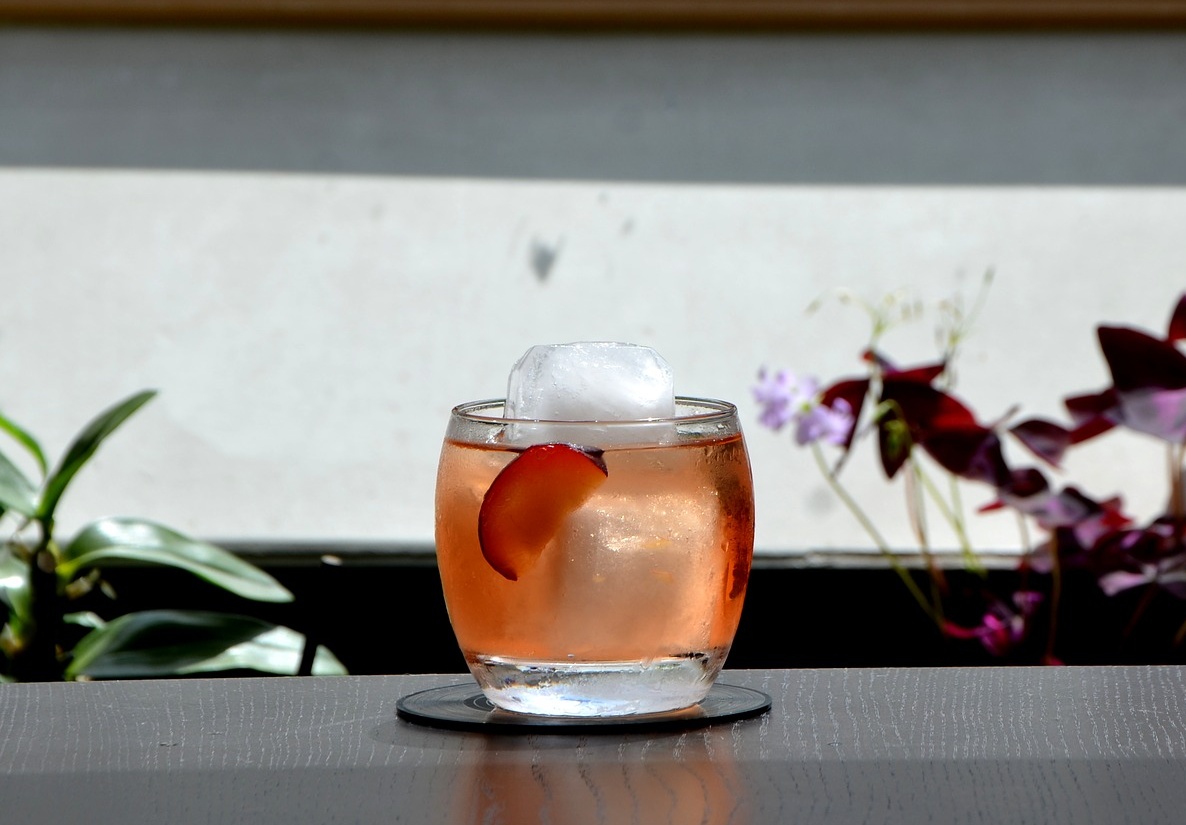
Seasonality is an important part of life in Japan, especially when it comes to booze. Each season is marked by a sudden glut of fresh vegetables and fruits, and as a result, seasonal fruit liqueurs have become especially popular. Most people have likely heard of umeshu—a liqueur made from steeping plums (ume) in sugar and alcohol. Other popular versions include: mikanshu (made from mikan, a citrus similar to tangerines), and yuzushu (from the ever-popular yuzu fruit). Beyond that there's also pear, apple, apricot... if Japan grows it, they've probably made a booze out of it! Fruit liqueurs in Japan tend to be quite sweet, with an alcohol content of 10 to 15 percent, making them a good pre-dinner aperitif option. Most izakaya and restaurants in Japan will have umeshu on the menu, though other fruit liqueurs may operate on a seasonal basis.
Chu-Hi
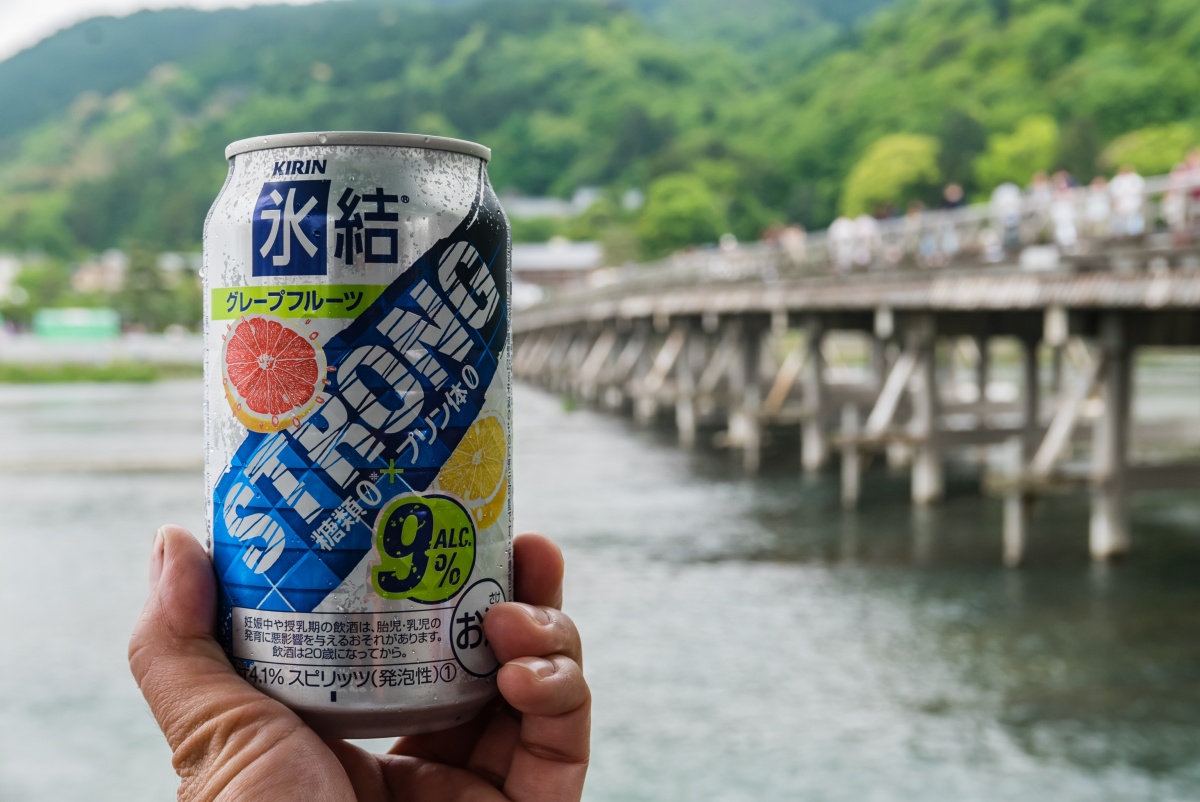
https://www.shutterstock.com/
"Hard seltzer" has really picked up in the west, and if you're a fan of those cans, boy do we have a treat for you! Japan's spirit and soda mixers are particularly popular with young people and students (and the occasional salaryman on the last train home), and it's easy to see why. These canned cocktails are cheap, sweeter than beer and also contain a comparatively high amount of alcohol. The two most popular are Kirin Chu-hi and Strong Zero—both of which are canned versions of chuhai (short for "shochu highball"), a shochu and soda blend. But there are tons of different brands, and some of them are also made with vodka, and other spirits.
This ubiquitous booze can be bought in convenience stores from Okinawa to Sapporo, and since they're generally between five and nine percent ABV, they're a quick, easy and potent solution to sobriety!
Enjoy responsibly, and cheers!



